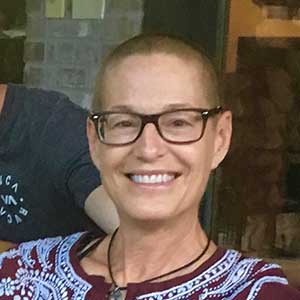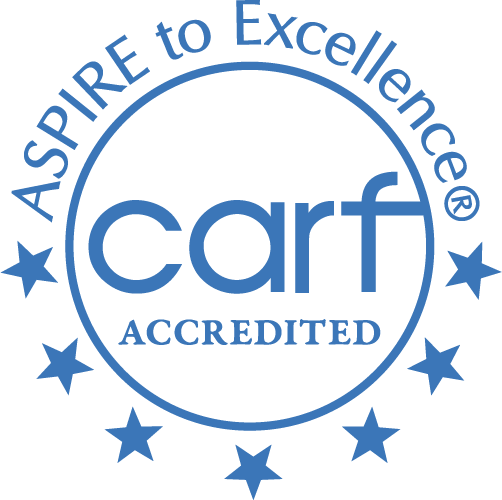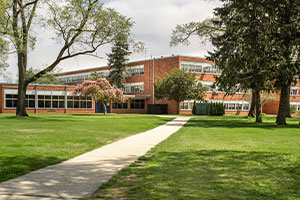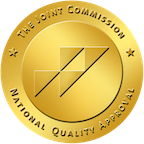Skip To Rehab Listing
That is one of the reasons the Evansville area has 33 alcohol and drug rehab facilities accessible to local residents who struggle with drug and/or alcohol addiction. These centers serve the region's population of 174,974 regardless of age or circumstances in order to make effective rehab available to anyone who needs it.
Drug and Alcohol Treatment Service Settings and Approaches
Evansville area residents who face addiction problems can choose from a range of treatment settings based upon factors such as their location and specialized needs.
Recovery settings include the following: outpatient substance abuse treatment services, outpatient detoxification facilities, long term drug and alcohol rehabs, short term rehab programs, inpatient treatment programs.
Clients can also choose from a number of recovery methods meant to offer effective services for their needs: activity therapy, motivational interviewing, trauma therapy, dual diagnosis drug rehab, cognitive/behavior therapy, behavior modification.
Special Programs for Addiction Treatment
Addiction is not the same for everyone, so treatment must be varied. That is why alcohol and drug rehab facilities in the Evansville area offer a number of special programs designed to provide a tailored approach to treatment for clients. These programs can include the following: seniors or older adults, persons with serious mental illness, social skills development, transgender or (LGBT) clients, active duty military, substance abuse education.
Treatment Payment Options
Patients sometimes put off rehabilitation because of concerns about payment. However, alcohol and drug rehab programs make a range of financing alternatives available to clients in order to address their financial considerations and maximize access to treatment. Some of these alternatives are listed here: cash or self-payment, private health insurance, payment assistance, medicare, medicaid, state education funds, county or local government funds.
Drug and alcohol treatment is accessible for Evansville, Indiana residents via a great deal of different programs, approaches, and payment options that put lasting recovery within reach.
Commonly Asked Questions about Addiction and Treatment
What is the most common substance abuse disorder?
The most common substance use disorder globally is alcohol use disorder (AUD). This disorder, often referred to as alcoholism, is characterized by an impaired ability to stop or control alcohol use despite adverse social, occupational, or health consequences.
Alcohol use disorder is defined by the American Psychiatric Association in the Diagnostic and Statistical Manual of Mental Disorders (DSM-5) as a problematic pattern of alcohol use leading to clinically significant impairment or distress, as manifested by at least two of eleven criteria, within a 12-month period.
The criteria include issues like spending a lot of time drinking, or recovering from drinking, giving up important social or recreational activities in favor of drinking, developing a tolerance (needing to drink more to achieve the desired effect), experiencing withdrawal symptoms when not drinking, and continuing to drink even when it's causing physical or psychological problems.
It's important to note that substance use disorders can develop with the use of many different substances, including illicit drugs like cocaine or heroin, and legal substances like alcohol or prescription medications. The prevalence of these disorders can vary by region and demographic group.
Regardless of the substance involved, these disorders can have serious impacts on individuals' physical and mental health, relationships, and ability to work or study. Treatment can often help people with substance use disorders to recover and lead healthy lives. If you or someone you know is struggling with substance use, don't hesitate to seek professional help.
What happens in an intervention for someone with an addiction to drugs?
An intervention for someone with a drug addiction is a structured and planned event designed to encourage the individual to acknowledge their addiction and seek professional help. The primary goal is to guide the person towards accepting treatment and taking the necessary steps towards recovery. Here is an outline of what typically happens during an intervention:
- Planning: Before the intervention, loved ones and concerned parties (such as family members and friends) gather to discuss the situation and develop a plan. They may enlist the help of a professional interventionist, who can provide guidance on the intervention process and help maintain focus on the desired outcome.
- Preparation: Participants gather information about the person's addiction, the impact it has had on their lives, and the available treatment options. They also prepare personal statements expressing their concern, love, and support, while addressing the negative consequences of the individual's drug use.
- Rehearsal: The group rehearses the intervention to ensure that everyone is prepared, confident, and aware of their roles. This step helps participants maintain a calm and non-confrontational tone during the actual intervention.
- The intervention meeting: The person with the addiction is invited to a pre-arranged location, often under the pretense of a different event. The group then confronts the individual with their prepared statements, detailing the impact of the addiction on their lives and urging the person to seek help.
- Presentation of treatment options: The group presents the person with a pre-selected treatment plan or multiple options, emphasizing the importance of immediate action. It's crucial to have arrangements in place, such as pre-admission to a treatment facility or an appointment with a counselor, to facilitate a smooth transition into treatment.
- Setting boundaries and consequences: During the intervention, participants establish clear boundaries and consequences if the person refuses to accept help. These consequences may include ceasing financial support, limiting contact, or other actions to protect themselves from the negative effects of the addiction.
- Support and encouragement: Throughout the intervention, participants express their love and support for the individual, emphasizing their belief in the person's ability to recover and rebuild their life.
- Post-intervention follow-up: If the person agrees to seek treatment, the group continues to provide support during their recovery process. If the person refuses help, the group must follow through with the established consequences to reinforce the seriousness of the situation.
What are things I should look for when choosing a rehab?
When choosing a rehab facility for yourself or a loved one, it's important to consider several factors to ensure the best fit and the highest likelihood of a successful recovery. Here are some key aspects to look for when evaluating potential rehab centers:
- Accreditation and Licensing: Ensure the facility is accredited by a reputable organization and licensed by the appropriate state or national authorities. This helps guarantee that the center meets established standards for quality care and safety.
- Treatment Approaches: Evaluate the treatment methods and therapies offered by the rehab center. Look for evidence-based approaches, such as cognitive-behavioral therapy, motivational interviewing, and medication-assisted treatment, which have been proven effective for treating addiction.
- Specialized Programs: Depending on your needs or the needs of your loved one, you may want to choose a rehab facility that offers specialized programs, such as those tailored for specific substances, co-occurring mental health disorders, or unique populations (e.g., veterans, LGBTQ+ individuals, or adolescents).
- Customized Treatment Plans: A high-quality rehab facility should develop an individualized treatment plan for each client, taking into account their unique needs, goals, and circumstances. This ensures that the treatment approach is tailored to provide the best possible support for lasting recovery.
- Duration of Treatment: Consider the length of treatment options offered by the facility. While shorter programs (e.g., 28-30 days) may be sufficient for some, others may benefit from longer stays (e.g., 60-90 days or more) to fully address their addiction and underlying issues.
- Aftercare and Continuing Support: Look for a rehab facility that offers aftercare services, such as ongoing counseling, support groups, or transitional living arrangements. These services can provide essential support during the transition back to everyday life and help maintain long-term recovery.
- Qualified Staff: Ensure the rehab center employs experienced, licensed, and compassionate professionals, such as therapists, counselors, doctors, and nurses, who are trained in addiction treatment and recovery.
- Family Involvement: Some rehab centers offer family programs or therapy sessions to involve family members in the recovery process. This can provide valuable support and help address any family dynamics that may contribute to addiction.
- Cost and Insurance: Consider the cost of treatment and whether the rehab center accepts your insurance plan or offers payment assistance options, such as sliding-scale fees or financing.
- Facility Amenities and Environment: Take into account the physical environment and amenities of the rehab center. A comfortable, clean, and safe environment can contribute to a more positive and focused recovery experience.



















